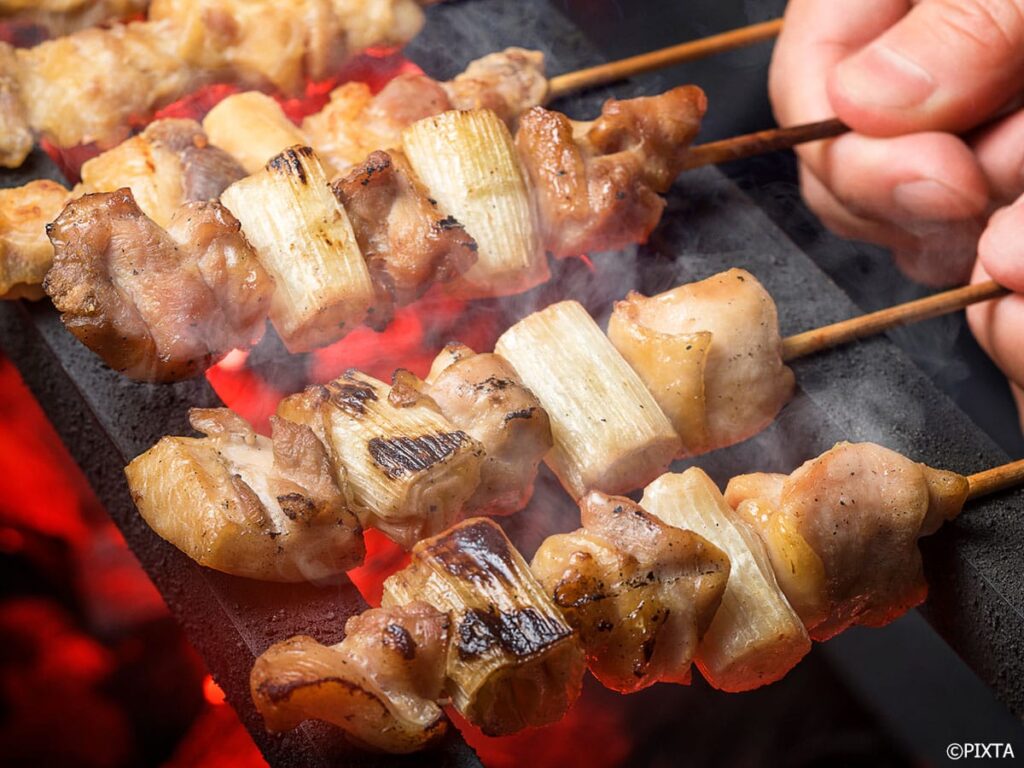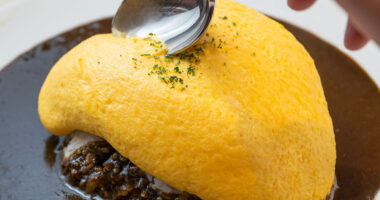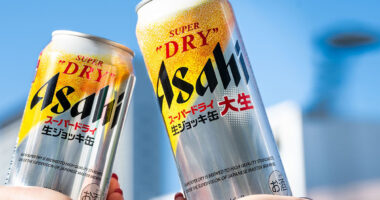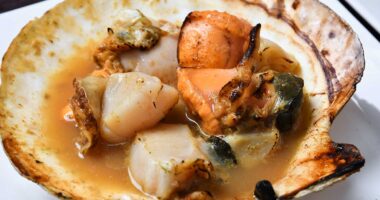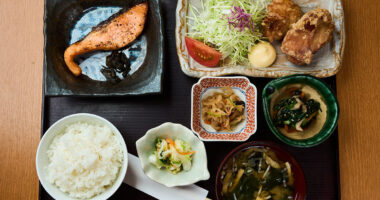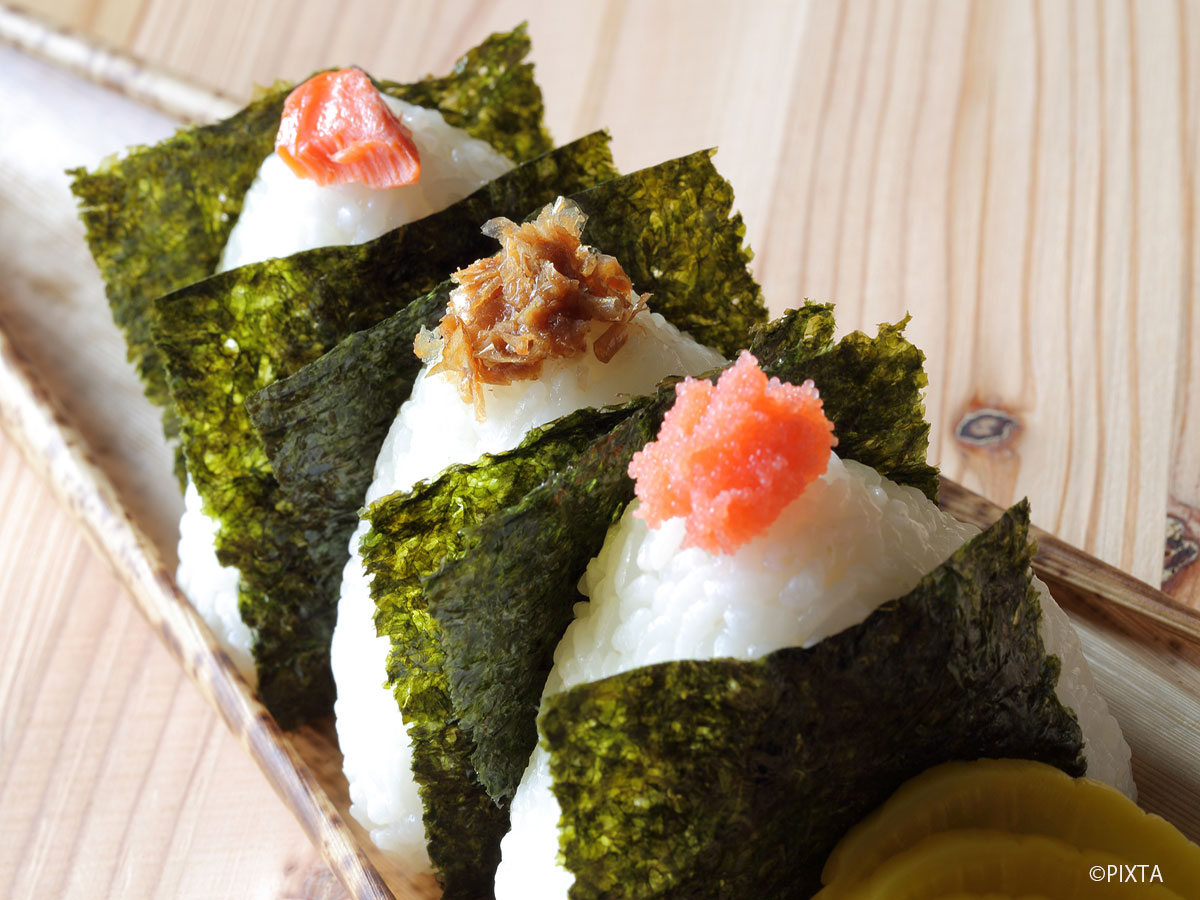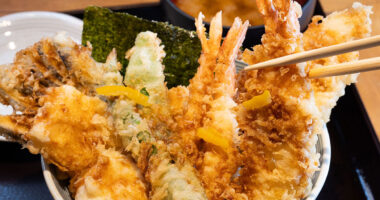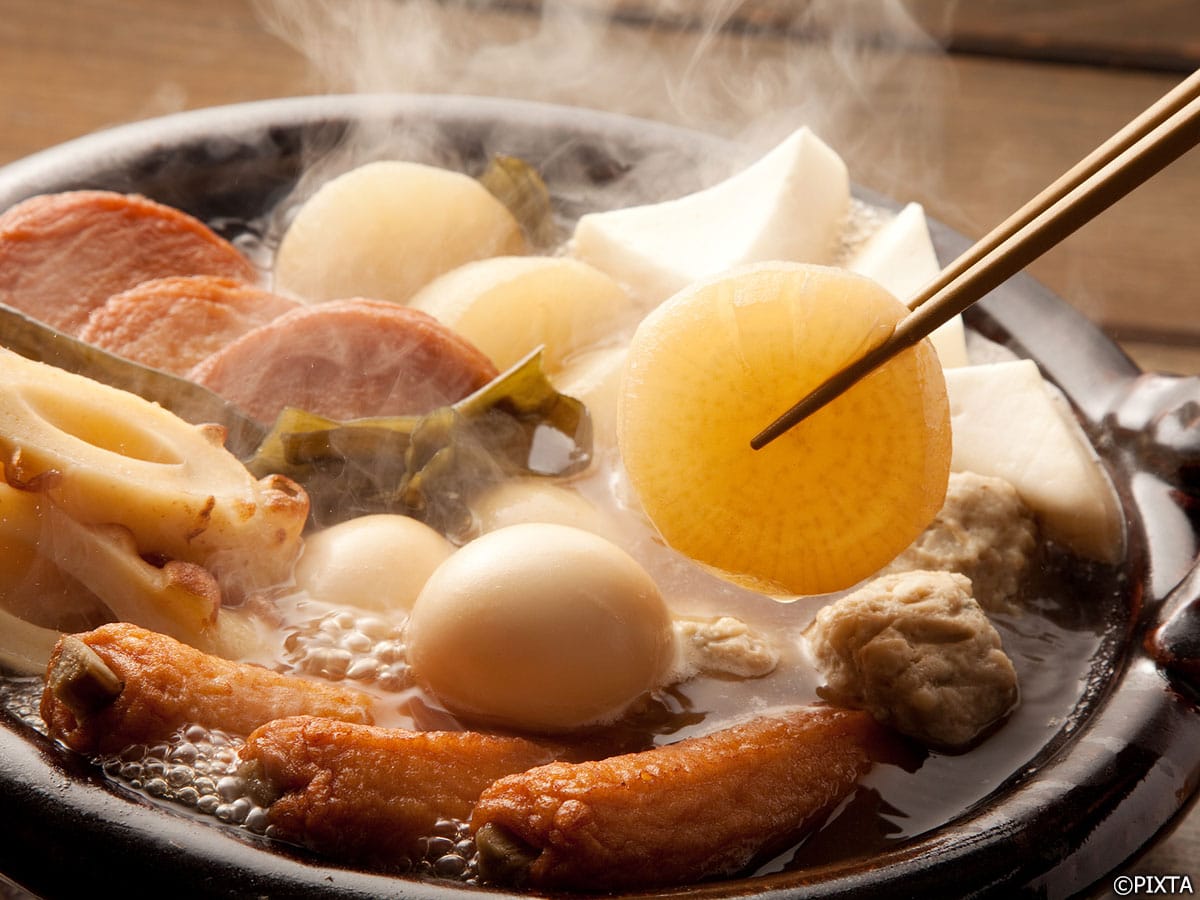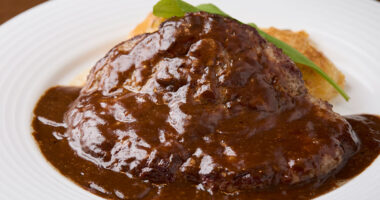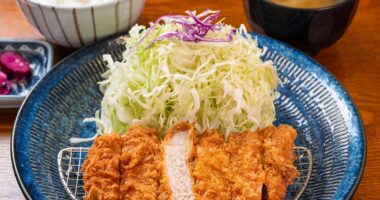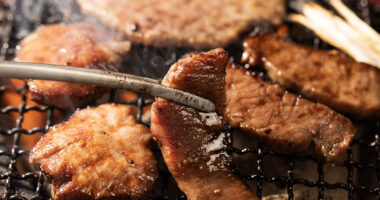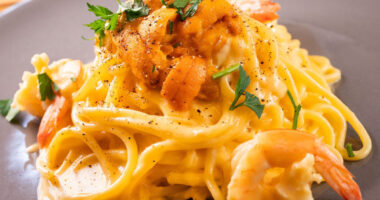Whether you call it kebab, kofta, satay or souvlaki, grilling meat on a skewer is a popular food preparation style all over the world. Japan is no exception. However, whereas many people have heard of sushi, tempura and ramen, Japan’s answer to the chicken kebab is less familiar outside of the country. And yet, you’ll find them almost everywhere you go.
Known as 焼き鳥 yakitori (literally “roasted or broiled chicken”), Japan’s tasty grilled chicken sticks are truly a treat. But if you think it’s just chunks of chicken breast or thighs, you’re in for a pleasant surprise.
What is yakitori?
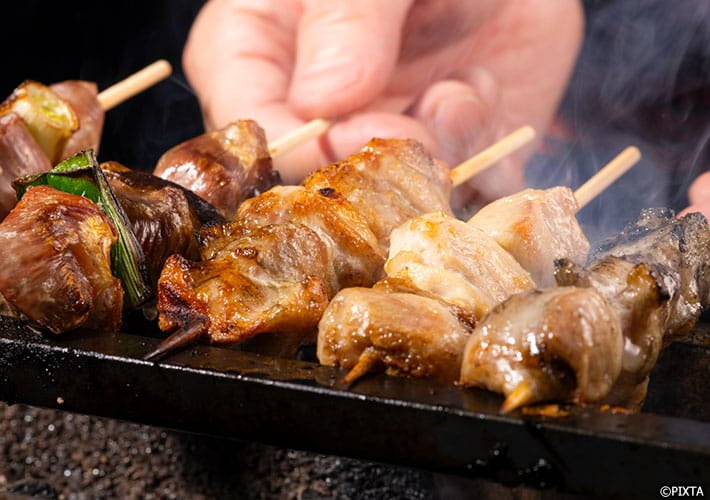
Delicious skewers of yakitori on the grill
Yakitori is typically made with chicken thighs, but other parts of the chicken can also be used, including the breast and wings as well as the organs. The chicken is cut into bite-sized pieces and skewered onto bamboo skewers. The skewers are then grilled, sometimes over charcoal, and rotated to ensure that they cook evenly and are not burned. Although chicken is the star at a yakitori stall, you’ll also sometimes find pork and other meats as well as vegetarian offerings.
Where to get yakitori
Yakitori can be found all over Japan, from street stalls selling skewers as cheap as $1 USD apiece to high-end restaurants serving full courses costing over $100 USD. It is said that there are several thousands of yakitori shops in Tokyo alone. The fact that there are even chain stores devoted to these skewered delights attests to how engrained it is in everyday life. For a more casual experience, head to an izakaya (Japanese gastropub), where you can enjoy yakitori along with a variety of other small plates and drinks. Izakayas are often crowded and lively, making them a great place to experience Japanese nightlife.
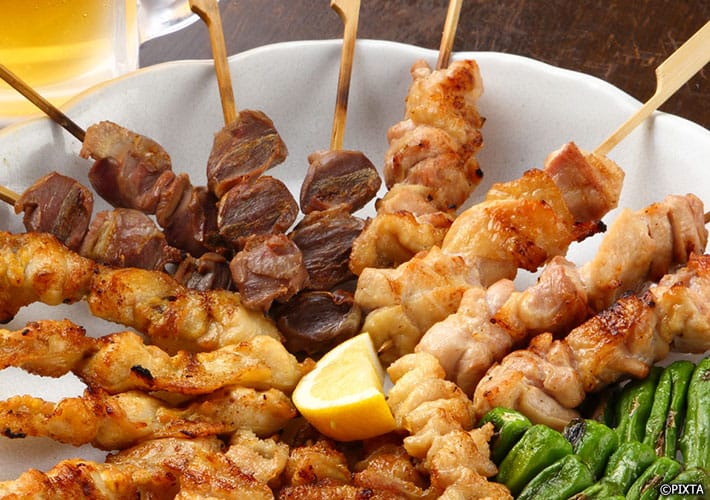
Assortment of yakitori skewers and beer at an izakaya
Types of yakitori
There are two main types of yakitori: たれ tare and 塩 shio. Tare refers to the sauce used to season the chicken during grilling. Typically made with soy sauce, mirin (a type of sweet rice wine), sake, sugar or honey, and other ingredients, the proportions and the preparations may vary from place to place.
Shio, on the other hand, simply means “salt.” It’s often served with a wedge of lemon for those who enjoy a fresh, citrus accent. Shio is often recommended when you want to enjoy the natural flavor and texture of the meat in leaner portions of the chicken, whereas tare is often recommended when you want to appreciate the juicy flavor of the fattier parts.
Some of the most popular types include:
もも momo: Chicken thigh meat, skewered and grilled.
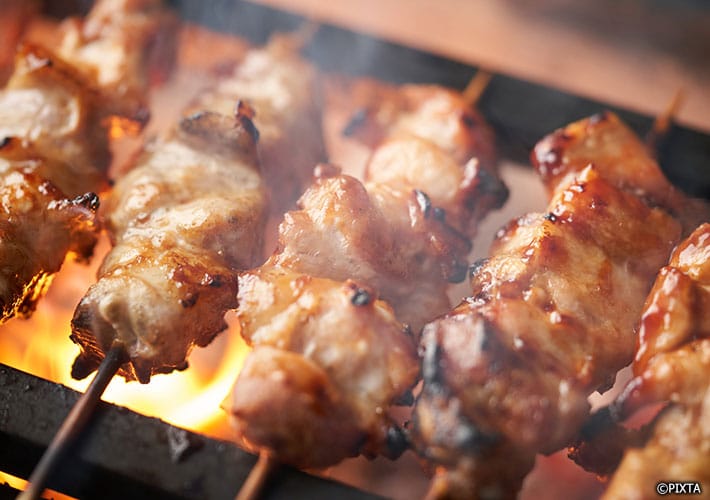
Momo skewers.
ねぎま negima: Chicken thigh or breast meat and pieces of Welsh onion, alternately skewered.
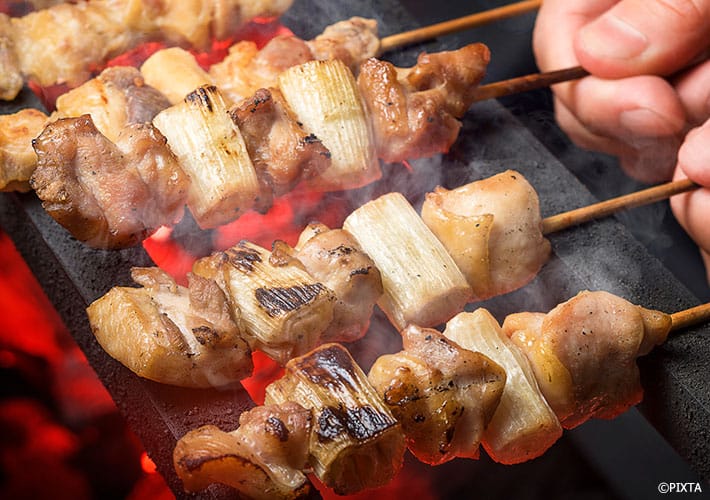
Negima skewers.
つくね tsukune: Ground thigh or breast meat, usually shaped into balls.
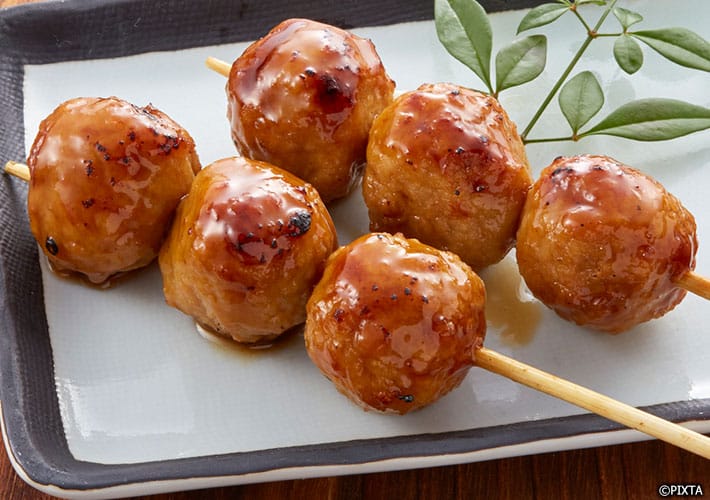
Tsukune skewers.
手羽先 tebasaki: Chicken wings.
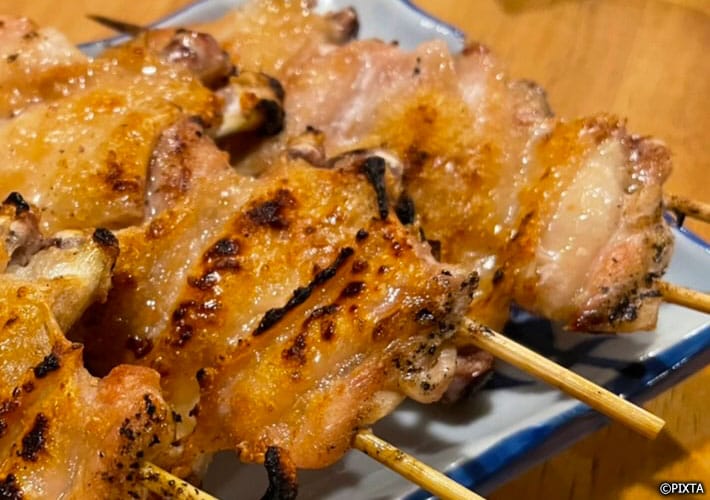
Tebasaki skewers.
むね mune: Chicken breast meat.
かわ kawa: Chicken skin.
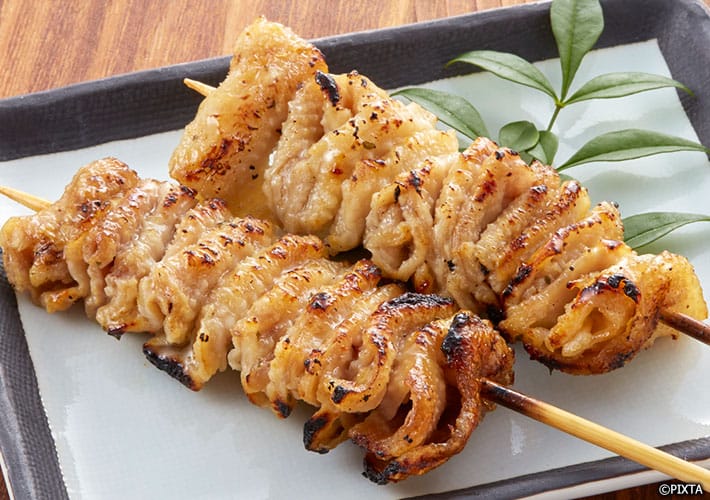
Kawa skewers.
There are many other types of yakitori as well, making use of all parts of the bird, including cartilage, tail, neck, and various organs. As for the chicken types, the most common are broilers but some shops use local or brand chicken for their skewers. Each type of yakitori offers a unique flavor and texture, and part of the fun of trying different types is discovering your favorite.
Tips for enjoying yakitori

Sitting on a stall bench enjoying yakitori fresh from the grill.
When it comes to enjoying yakitori, there are a few things to keep in mind. Many establishments serving yakitori will also provide a container to put your skewers in when you’re done. If you’re heading for a yakitori stall, it may have benches or stools but some stalls are takeout only. It’s not uncommon to see people eating their skewers while standing nearby so they can enjoy them hot off the grill. When it’s available for takeout, stands will often give you small packets of tare and chili pepper mix for you to season them. If your hotel has a microwave oven, you can reheat it.
To order, a useful phrase to keep in mind is 一本 ippon for one skewer, 二本 nihon for two, and 三本 sanbon for three. You can just show your fingers if that’s too much of a hassle. If you’re at a yakitori establishment with a big menu and aren’t sure what to order, you can always ask for お勧め osusume, meaning the chef’s recommendation.
In conclusion, yakitori is a must-try dish for anyone visiting Japan. Its rich history, complex flavors, and artful preparation make it a memorable Japanese culinary experience. No matter where you enjoy it, be sure to savor every bite of these delicious grilled chicken skewers.
